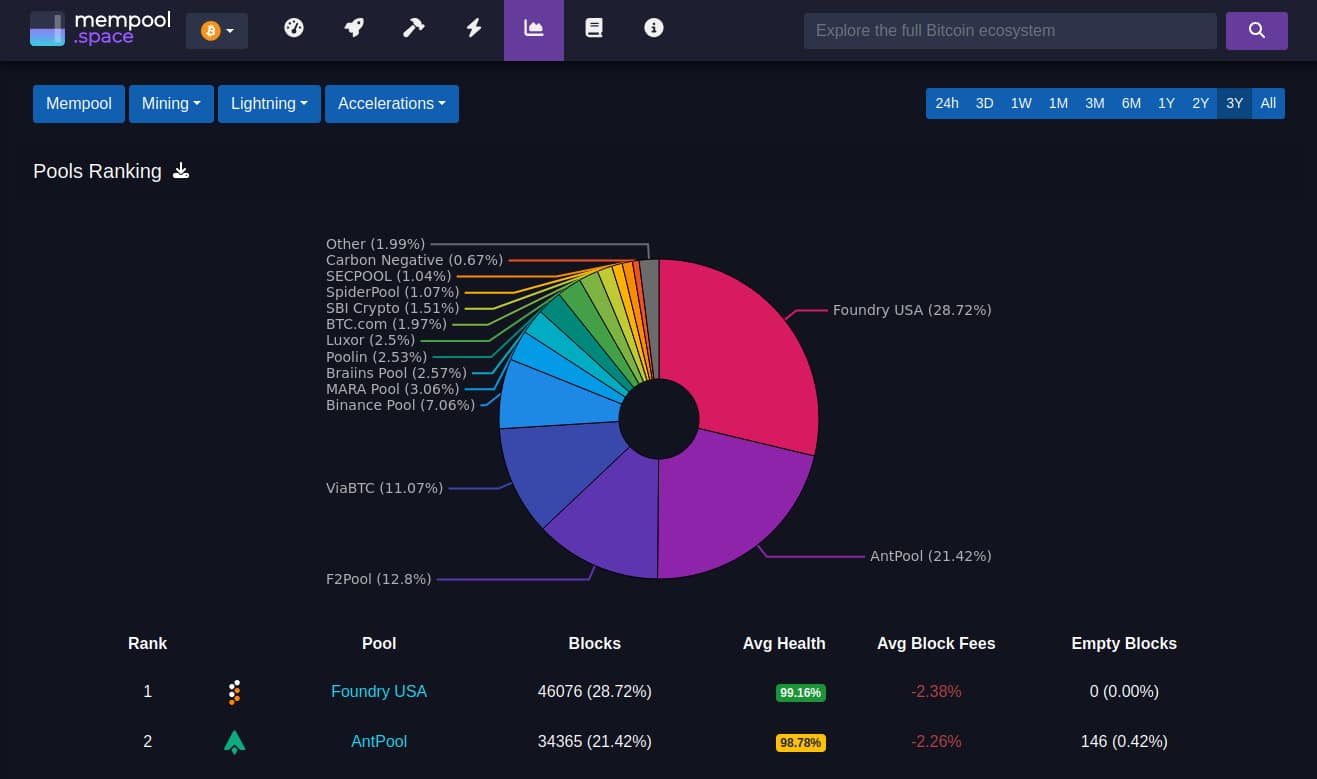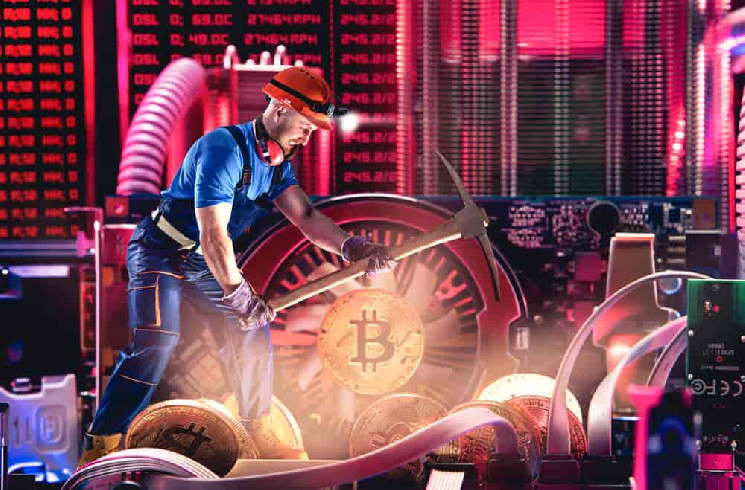Bitcoin (BTC) is commonly praised by its supporters as probably the most decentralized cryptocurrency, however the fact could also be one thing else. Based on Onchain knowledge, there are solely two Bitcoin mining swimming pools which have mined greater than 51% of BTC up to now three years. There’s a cause why it will be important and may increase centralized alerts for main blockchain networks.
Finbold has obtained this data mempool.house,Bitcoin knowledge aggregator and block explorer have been collected instantly from the observer node. Primarily, this knowledge ranks the Bitcoin mining pool for every mined block for the whole block mined over a selected interval.
Over the previous three years beginning March 28, 2025, Bitcoin mining blocks have been very dominated by two mining swimming pools.
To be exact, Foundry USA issued 46,076 blocks (28.72%) and Antpool 34,365 blocks (21.42%) out of 160,432. Collectively, these mining swimming pools have mined 90,441 blocks, or 56.37% of the whole over the previous three years.

Why is it essential that there are solely two mining swimming pools above the 51% threshold?
Based on a white paper written by Nakamoto At, Bitcoin's worth proposition lies in reaching consensus on the blockchain state in a decentralized manner. That is achieved by way of Bitcoin mining if a particular node (miner) makes use of computational energy to interrupt the hash of encryption to find the block.
As soon as a block is found, the miners earn the best to gather Coinbase, a newly created BTC unit. Along with Coinbase, miners also can add transactions to blocks to gather their respective charges.
To do that, miners should broadcast found blocks in each Coinbase transactions and in all third-party transactions. Different nodes designed by Satoshi observe an extended chain. This implies including a series with extra calibration work put in, or extra blocks.
There’s a theoretical assault known as a 51% offensive, and in idea, a foul actor can spend double. Moreover, Bitcoin mining swimming pools could censor transactions as they’re deliberately broadcasted if they’ve adequate management over mined blocks.
Finbold reported that F2Pool, the third largest Bitcoin mining pool, was arrested and later acquired a acknowledged transaction.
In its present state, the Bitcoin community has two Nakamoto coefficients. The Nakamoto coefficient is a metric that measures the decentralization of a blockchain community by figuring out the minimal variety of impartial entities (similar to miners) required to regulate or destroy the community.
Bitcoin mining pool, not particular person miners or nodes
It seems that every pool is fabricated from a distinct miner, however it’s a pool coordinator, a single entity, which units up blocks, broadcasts them to the community, collects rewards and distributes them to miners as wanted.
Due to this fact, mining swimming pools are associated entities in measuring present blockchain consensus distributed state. It will possibly solely be migrated as soon as if it's too late below a digital assault, not particular person miners or nodes.
Now we have additionally seen circumstances the place transaction charges haven’t been distributed to Antpur miners, however are despatched again to the sender, as anticipated.
Moreover, Antpur was additionally the protagonist of one other discovery by a well known pseudonym analyst. B10C. Researchers say the info counsel that the second largest mining pool may have a robust influence on the opposite 5 Bitcoin mining swimming pools.
Trying on the Merkle department that mining swimming pools ship to miners as a part of tier jobs, it’s clear that BTCCOM swimming pools, binance swimming pools, swimming pools, EMCD, Rawpools, and in some circumstances Brainins* have precisely the identical template and customized transaction prioritization as ANTPOOL. https://t.co/ktjfwttxep pic.twitter.com/xhcrdvkoh8
– B10C (@0xB10C) April 17, 2024
In conclusion, Bitcoin decentralization might be suppressed as an financial system of scale dynamics has emerged and has elevated the benefit of enormous miners. The extra blocks a mining pool is found, the extra rewards can be collected from newly issued BTC and transaction charges. This can permit for higher funding in infrastructure, simpler entry to capital, and additional benefits over future block mining.
Featured photographs from ShutterStock.


